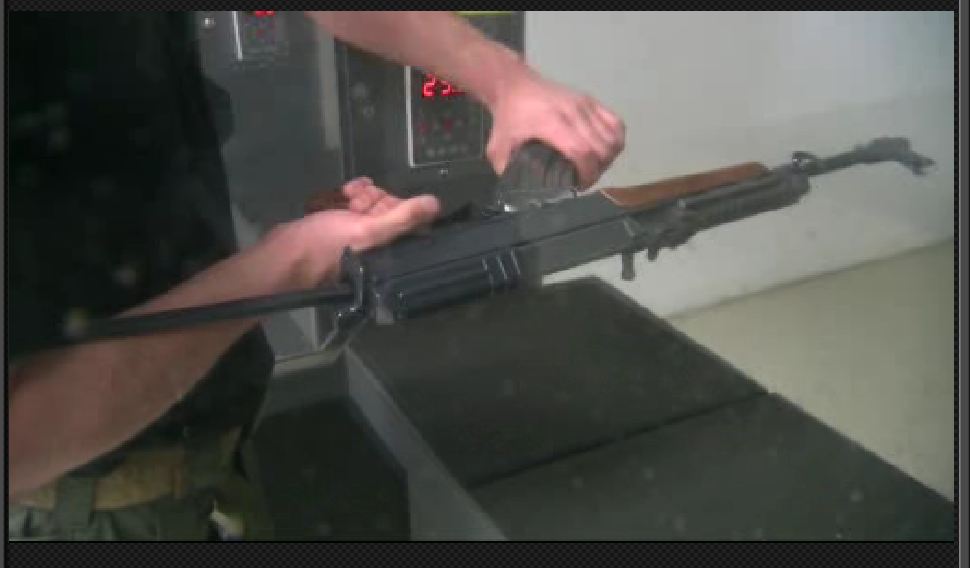In late February, the RCMP banned two varieties of semi-automatic rifles, and Public Safety Minister Steven Blaney offered owners a two-year amnesty to their owners.

But without the defunct long-gun registry, the feds don’t seem to know how many guns they banned, or even where to get an educated guess.
READ MORE: How will the RCMP enforce new long-gun ban with no long-gun registry?
A newly released impact analysis for the amnesty shows senior officials at the federal Public Safety department tried to pull numbers together from several sources, including media reports.
They cite an estimate from customs officials that more than 8,700 CZ858s have been imported over the years. This doesn’t seem to allow for CZ858s made before 2007, which remain legal. And they seem to rely on the 473 such rifles registered in Quebec as a scale for the rest of the country, even though data shows they’re more popular in Alberta and B.C.
The Public Safety report cites “media reports” from an unknown source for an estimate of over 2,000 Swiss Arms-made rifles in Canada, which is nearly double the number in the long gun registry in mid-2012.
Lyndon Murdock, the report’s author and director of firearms and operational policing policy at Public Safety, would not be available for an interview, a Public Safety spokesperson said.
READ MORE: Public Safety Minister mulls taking gun decisions away from RCMP
- Arrest made after police issue emergency alert about ‘dangerous man’ in Bible Hill, N.S.
- Grandparent scam: Canadian seniors with landline phones targeted, out about $2.2 million
- 3-year-old Elijah Vue still missing: Man pleads not guilty to child neglect
- Closing arguments presented in Michael Gordon Jackson abduction case
Ironically, Global News seems to have better-quality data: We obtained a redacted copy of the national firearms database, made before long-gun data was deleted, under access-to-information laws. The data is freely available to anyone who asks for it, including public officials. Public Safety did not respond to questions about why they didn’t use this data instead.
According to that database, dated in mid-2012, this ban affects just under 8,000 rifles: 1,135 Swiss Arms and 6,789 CZ858s registered in 2007 or later – some of which may have been made before 2007. Just over 60% of them are in B.C. or Alberta.
The RCMP has not responded to Global’s questions about how much money it budgeted to buy back the banned guns, although an official speaking on background, confirmed that compensation would be offered.
On the other hand, given the report’s comment that “there are no cost implications associated with this amnesty,” it’s possible the government doesn’t think the ban will stay in place long enough to need a buyback budget.
READ MORE: Feds budget $260,000 to seize rifles easily converted to sub-machine guns
“This is an example of exactly what we said when the gun registry was being eliminated: that it would create obstacles to the police in doing the work they need to do to protect public safety,” said NDP public safety critic Randall Garrison.
“The RCMP has a pretty good idea how many there are,” Garrison added. “Most of these guns came in through a fairly narrow set of channels. I know they’re working with the people who sold these, who are responsible dealers who keep records.”
Garrison would not say whether a hypothetical NDP government would reconstruct the registry.
“Now that the registry’s gone, its usefulness is becoming more and more obvious,” said Heidi Rathjen, a survivor of the Montreal Massacre and fervent gun-control advocate.
“It looks like the RCMP is desperately searching for any piece of information that could lead them to the owners of these now-prohibited weapons, including media reports, whereas it would be child’s play to find the owners if the registry were still alive.
“So instead of having an efficient and practical way of tracking legal gun ownership, police have to rely on the same investigative tools they would use to track illegal guns. What a mess.”




Comments